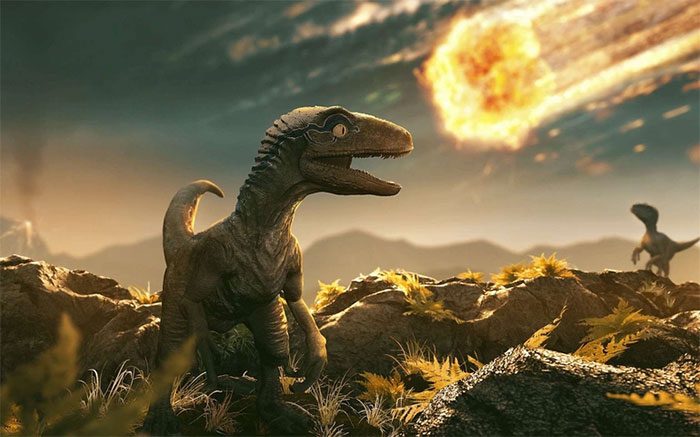About 66 million years ago, Chicxulub – an asteroid larger than Mount Everest – collided with Earth, wiping out up to 75% of life on the planet, including dinosaurs. This is a common explanation for the extinction of dinosaurs. However, the specific impact level of this collision remains a topic of debate.

A series of “extinction processes” triggered by this event led to the disappearance of dinosaurs and 75% of life on Earth.
The leading recent hypothesis is that sulfur from the impact or soot from global wildfires obscured the sky, plunging the world into a prolonged dark winter during which only a few lucky species survived. However, a study published in the journal Nature Geoscience on October 30 reinforced the earlier hypothesis that the deadly winter was formed by dust rising from the asteroid impact. According to scientists, fine silicate dust from pulverized rock could remain in the atmosphere for 15 years, causing global temperatures to drop by as much as 15 degrees Celsius.
Previously, in 1980, the father-son duo of scientists Luis and Walter Alvarez were the first to hypothesize that dinosaurs went extinct after an asteroid impact that covered the world in dust. Their hypothesis faced much skepticism until a decade later when the giant Chicxulub crater was discovered on the Yucatán Peninsula in the Gulf of Mexico. Today, the majority of the scientific community agrees that the main “culprit” behind the extinction of dinosaurs is the Chicxulub asteroid.
However, researcher Ozgur Karatekin from the Royal Observatory of Belgium noted that in recent years, there has been increasing opinion that sulfur, not dust, was the true agent that caused the deadly winter. Scientists argue that the dust from the impact was not of the appropriate size to remain in the atmosphere long enough to cause such an event. In this study, the international team was able to measure the dust particles that appeared immediately after the asteroid impact. These dust particles were found at the Tanis fossil site in North Dakota, USA.
Although located 3,000 km from the Chicxulub crater, this site preserved several notable remains and specimens believed to date back to just after the asteroid impact, found within the sediment of an ancient lake. According to scientists, the dust particles measured 0.8 to 8 micrometers in size—just enough to remain suspended in the atmosphere for up to 15 years.
When inputting data into climate models for present-day Earth, the research team determined that dirt may play a larger role in the extinction event than previously suggested. Of all the materials ejected into the atmosphere by the asteroid, they estimated that 75% was dust, 24% was sulfur, and 1% was soot. According to scientist Karatekin, dust particles completely obstructed the process of photosynthesis in plants for at least a year, leading to the collapse of life.

















































